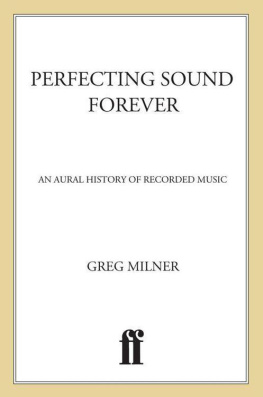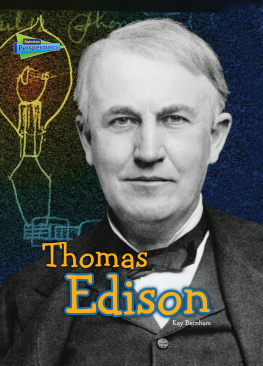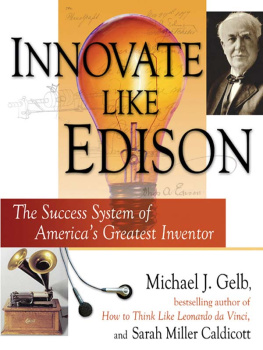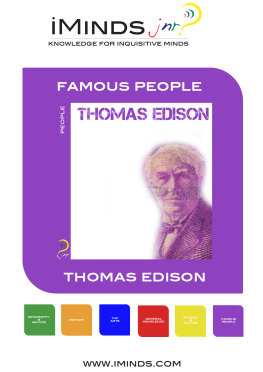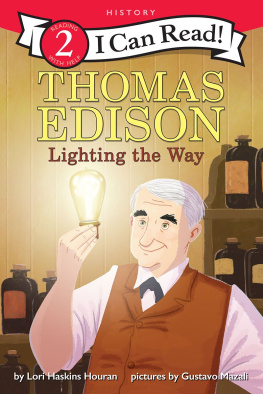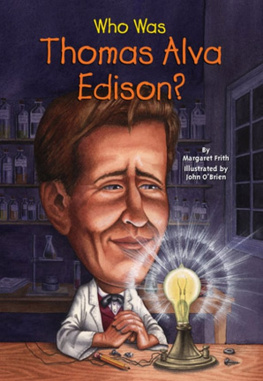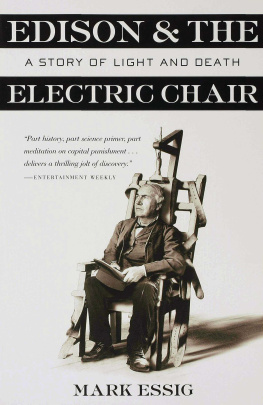The turntable of the talking machines is comparable to the potters wheel: a
tone-mass is formed upon them both, and for each the material is preexisting.
But the finished tone/clay container that is produced in this manner remains
empty. It is only filled by the hearer.
Theodor Adorno
T he first thing the universe did was cut a record.
For 400,000 years after the big bang, all of creation was a hot, dense, soupy substance that trapped light. It also conducted sound. The pressure from the initial blast pushed on pockets of hot gas. The gas resisted and pushed back. The resulting vibrations filled the cosmos with the sound of celestial bells.
In the same manner that a handful of stones scattered in a pond generates overlapping ripples, the sound waves that caused the cosmic hum spread out through space as ripples of excess matter. It was in these ripples that galaxies were most likely to form. As the universe cooled, the matter was frozen in place. Sound now traveled much slower than light. Astronomers refer to this as the period when the universe recombined. They could just as well say remixed.
The initial recording session took about a million years. One of the songs it produced was us (the rough tracks, anyway). Like the sound waves inscribed in the grooves of a vinyl record, we live in the galactic ripples. Our prehistory is frozen sound.
Or maybe a compact disc is a better model for who we are. Unlike a phonographs stylus, which moves from the discs edge to its center, the laser that reads a CD begins at the center and moves outward. The primordial sound wave of the big bang is now around 500 million light-years across, reverberating throughout the still-expanding universe. The tone is too faint and low to be heard without the most sensitive equipment, but its out there and all around us. The final mix isnt complete, and we dont know how the record ends.
Around 13.7 billion years later, Thomas Alva Edison, working in his laboratory in West Orange, New Jersey, shouted Mary Had a Little Lamb into a mouthpiece. The sound was etched onto wax paper and played back, making Edison the first human being to record a sound and reproduce it. A few months later, he unveiled the first phonograph, which he used to record a remake of the poem, this time onto tinfoil. And on a Friday evening thirty-eight years after that, an Edison phonograph convinced several hundred people in nearby Montclair that a recording could sound like life itself.
The concert was by invitation only. If you were there, it was because someone at the Phonograph Sales Company, the local purveyor of Edison audio products and the sponsor of the event, thought you were among a better class of people. The featured performers were the contralto Christine Miller, the violinist Arthur Walsh, and the flutist Harold Lyman. As people filed into the hall of the Montclair Club on September 17, 1915, the real headliner was already onstage, front and center: an Edison Diamond Disc Phonograph in a wood cabinet.
The Diamond Disc Phonograph was no ordinary talking machine, a term that Edison considered an insult to what was nothing less than a musical instrument. He and his hand-picked research team had spent years developing it, doing hundreds of tests and making countless adjustments to arrive at a machine that sounded perfect. They had even invented a new type of resin for the discs themselves. The Diamond Disc Phonograph was perfect because it disappeared every time you played it. The machine was a neutral conduit. It heard everything, and added and subtracted nothing, issuing music so pure that Edison was confident it could withstand the toughest challenge.
Tonights concert was billed as a tone test.
Verdi E. B. Fuller, the head of the phonograph division at Edisons company, walked onstage. Ladies and gentlemen, he said, the mere fact of sound reproduction no longer has novelty, but there has lately been developed by Mr. Edison a new art of recording and re-creating all forms of sound. You are invited here to listen to a new sound-recreating instrument in which Mr. Edisons new art is embodied.
The invitations had mentioned something about this, some sort of comparison between the live voice and its reproduced facsimile. Fuller told the audience that Edisons machine could hear as sensitively as the human ear, and could therefore reproduce a sound that was indistinguishable from the original. I shall demonstrate to you that the characteristic tone of every musical instrument can be faithfully re-created, he said, adding, The reproduction of the human voice is equally faithful.
Fuller brought Miller onstage and cued up a recording of her singing O Rest in the Lord, an aria from Mendelssohns Elijah . The record began, and Miller let it play for a while. She began singing along with it, and then stopped. There were audible gasps from the audience. It was uncanny how closely Millers recorded voice mirrored the sounds coming from her mouth onstage. The record continued playing, with Miller onstage dipping in and out of it like a DJ. The audience cheered every time she stopped moving her lips and let the record sing for her. Then she did the same thing with a recording of herself singing Liddles Abide With Me.
She took a break and Fuller introduced Walsh, who soloed over a recording of Ave Maria . After Lyman took his turn, Miller returned to sing Ah! Mon Fils and some Scottish folk songs. Lyman and Walsh performed together, and then it was time for Millers finale. Fuller put on a recording of Miller singing Fosters The Old Folks at Home. Her voice issued forth, loud and strong, from the phonographs bell
Way down upon the Swanee River,
Far, far, away
Thats where my heart is yearning ever,
Home where the old folks stay
The Miller onstage began to sing with the Miller in the machine. As the mechanical Miller sang, flesh-and-blood Miller continued her bait-and-switch. The audience craned forward to see when her lips stopped moving. It was the only way they could tell when she wasnt singing. As the song neared its end, at a point when both Millers were singing, the audience received one final surprise. The stage lights went down. The audience was now staring into darkness as the music continued. Only their ears could guide them, and their ears failed them. The lights came up, and there was Miller, her mouth frozen in a smile.
When had she stopped singing?
The crowd went wild.
What happened that night in Montclair was repeated thousands of times between 1915 and 1925, in cities and towns of all sizes, first in the United States and later around the world. In 1920 alone, the peak year of the tests, twenty-five sets of artists performed two thousand tests. The tone test procedure was always the sameartists signed to Edisons record company performed for free, accompanied by their recorded voices emitting from the bell of a Diamond Disc Phonographand the goal was always the same: to prove that the Edison Diamond Disc Phonograph had reached the apex of audio perfection, by fooling listeners into thinking they were hearing the real thing.
Tone tests were eventually held in towns too small to host professional musicians. For some people, a tone test was their first major live music event; for many others, it was the first time theyd been invited to hear expensive recorded sound and to think about it critically. Like hardcore bands in the early eighties going wherever a punk kid could book an American Legion hall, the tone tests would come to you (probably playing in those same American Legion halls), as long as there was a local Edison dealer willing to do some legwork.

